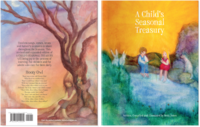Rahima Baldwin Dancy's Blog, page 2
January 15, 2013
The Value of "Wait"
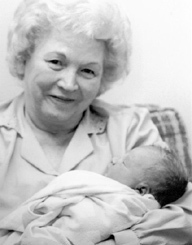 Do you know Janet Lansbury's blog "Elevating Child Care"? She has written a fantastic article about "The Parenting Magic Word." It's wait. Take a look at this great article--you'll immediately be able to apply it in your life!
Do you know Janet Lansbury's blog "Elevating Child Care"? She has written a fantastic article about "The Parenting Magic Word." It's wait. Take a look at this great article--you'll immediately be able to apply it in your life!
The photo at left is by Harriette Hartigan of Insight Photography.
December 16, 2012
Communicating with Children and Supporting them in Difficult Times
By Hiromi
Niwa Doherty
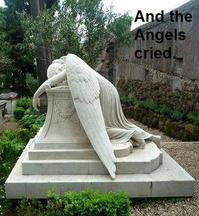 [NOTE: In response to the recent tragic shootings in Connecticut, parents have been asking how to talk with their children. Hiromi's article after the tsunami is so excellent that I'm reprinting it here.]
[NOTE: In response to the recent tragic shootings in Connecticut, parents have been asking how to talk with their children. Hiromi's article after the tsunami is so excellent that I'm reprinting it here.]
As
a native of Japan, and having family members and many friends in the midst of
the devastation, I continue to struggle to find strength to overcome my own
fear and sadness.
Yet,
a question came to me--how do I talk to my 4-year-old about this? This awoke me.
I felt called to stand up and do something, anything if I can, to protect my
own child and to help fellow parents as we work together to protect our
children from further harm. How can we support our children while we adults are
struggling?
Now
I have re-written my findings in English and would like to share them with you.
Although many of my points are for those directly affected, you may still find
them applicable. I thank Ms. Andrea Gambardella of Green Meadow Waldorf School
for giving me a jump start with her thoughtful input and support.
1. Turn off the TV
While
it is obvious to adults that the TV is replaying the same footage over and over
again, these repeated inflow of graphic images and shocking news make young
children think that these scary events are still ongoing. Additionally, they do
not have a sense of distance, so even reports from a far away country have a
strong impact. They may well think what they see on TV is happening right in
their own neighborhood.
2. Make them feel safe
Children
express their anxiety in various ways. They can become dependent and clingy, afraid
to go to bed or bathroom alone, or behave aggressively. Some children may experience
physical pains such as a headache and stomachache. Those who have long ago
graduated from diapers may have accidents. Give them hugs and physical
closeness.
Spend
time together reading or taking a walk.
Give
them assurance by telling them we love them and we will continue to take care
of them.
3. Be open and receptive to how
a child reacts/expresses himself
Let
them know that their feelings, thoughts, questions, reactions, however they may
communicate (or not communicate), are all valid and we accept them as they are.
Invite their expressions with open and receptive attitude, so they can speak to
you about anything, when they choose to. Some children prefer not to talk at
all--let them be silent. Young children live in the moment and have dream-like
minds, which means they may not accumulate or linger on specific emotions or
memories, as adults do. Children may find ways to express and soothe themselves
by drawing or playing out their experiences. I will come back to this point
later.
4. The best time to talk is
when a child asks questions
Many
of us remember the events of 9-11 clearly. I know I will not forget about the
3-11 earthquake. We will all have particular events in our lifetimes that will
have great significance. At such moments, we are given a possibility to
transcend our old selves. It will not be an easy talk. But you know your child
the best, her temperament, thoughts and possible reactions. With that deep
knowing, you can address her with sincerity and love.
5. Avoid scientific explanation
or frightening graphic images, give simple narrative
Children
know intuitively when we are not truthful. Ignoring and understating the fact, or
telling a lie (however well meaning it is) will make them more fearful. Give
them simple explanations in words they can understand. Children are born
resilient, adaptable and cheerful. Trust their strength, and with your striving
to do your best, your child will be able to get the message. Do not leave this
task to the TV or anyone else, for if we do this, the parent-child relationship
will not be the same. This will be one of the very important moments for you
and your child.
6. End with hopeful,
encouraging facts and words
I
quote from Mr. Rogers,
"When I was a boy and I would see scary things in the news,
my mother would say to me, "Look for the helpers. You will always find
people who are helping." To this day, especially in times of 'disaster,' I
remember my mother's words and I am always comforted by realizing that there are
still so many helpers - so many caring people in this world." 1
We
may not always give them a happy ending, but we can end our story with focus on
hope and recovery rather than fear and sadness.
1 http://www.fci.org/new-site/par-tragi...
7. If asked, repeat the same
story as many times as necessary
Children
like repetition. When it is difficult to understand or believe what has been
told, they may ask you the same question over and over again. Repeat the same
story as many times as they ask you. They feel secure by your consistency and
can then process the information at their own pace.
8. Regain rhythm and routines
of everyday life
Not
just do children like to feel the comfort of the repetition of stories, but
children like repetition, and in fact, they thrive on it. Even as adults we
will feel anxious when we are out of our routines and we may have physical
ailments as a result. As early and as much as possible, bring back the rhythm
and routine as before.
If
nothing else, we can at least say "good morning" or say grace before and after
meals.
If
your life has been changed drastically and it is difficult to bring back the
familiar, start a new tradition, something that is small and easy to do. Exercise
with children in the morning, say a blessing before meals, or simply pray. If
you repeat it every day in the same manner, it will increase the sense of
rhythm which will become a security blanket for children. It will be our
guiding light, as we sail in the sea of uncertainty.
9. Give children time and space
to play
Children's
work is play. Under extremely difficult situations, it may be difficult to even
think of the cheer and fun of play. As described before, children may process
and digest their experiences and emotions through drawing or playing out in
"let's pretend" scenarios.
Even
temporarily, if children can be immersed in play--by moving their bodies and letting
their inner feelings out, it will greatly help them in their healing processes.
Let them be children, as much as you can. Give them time and space. Show them
the games you used to play with only a stone. Give them pencil and paper that
they may use as they wish.
10. Children imitate adults. Be
a role model
Children
imitate adults. They are keen observers and do exactly the same. They take in not
only our actions, but our conversations with other adults, and our innermost
state of being -- how we feel and what we believe--everything! I am not
suggesting that we become someone else. We cannot make ourselves up or stand
taller than we actually are.
Children
see us struggle and stand up again, while keeping our spirits high and fighting
our fear and hardships. We do make mistakes and fall back sometimes, but it is
our striving, despite it all, that children find strength and courage to
imitate.
Please
refer to the inspiring article at the link below, written by Susan Weber,
Director of Sophia's Hearth Family Center, Keene, NH, a master teacher and my
mentor, with whom I am fortunate to have studied: http://noharajp.net/openforum/article/32
11. Be active and do something
meaningful (pray, donate, help with chores)
If
ready and willing, involve children in meaningful activities, they like to help
and be part of the bigger world.
12. Give them stories that talk
about courage and overcoming sadness and hardship
I
started looking for such stories and would like to create a list and/or
compilation. Meantime, I was also advised that while the content of a story
remains important, it is how we tell them the story, which is more significant.
Create a peaceful environment, take a deep breath, so that you can calmly
connect with the spirit of the story. Then both you and the children may
receive wisdom, comfort and healing from the story. May we trust our instinct
as parents and act courageously. May children smile and laugh again very soon.
Hiromi Niwa Doherty
Bibliography
American
Psychiatric Association Website,http://www.healthyminds.org/More-Info...
NYU
Child Study Center Website, http://www.aboutourkids.org/articles/...
Mr.
Rogers' Website, http://www.fci.org/new-site/par-tragi...
Private
conversations with Ms. Andrea Gambardella, kindergarten teacher, Green Meadow
Waldorf School, NY, USA
November 26, 2012
Join Waldorf Peace Work in the Middle East
 Did you ever have the thought that lasting peace must grow out of children being educated in a different way? That's how Waldorf education developed out of the ashes of "The Great War," and it's the impulse behind a nonprofit organization working with Waldorf education as a tool for Arab-Israeli understanding. ReGeneration is "an interfaith non-profit seeding the Middle East with an educational philosophy that embraces life, learning, the arts, the earth and all the children."
Did you ever have the thought that lasting peace must grow out of children being educated in a different way? That's how Waldorf education developed out of the ashes of "The Great War," and it's the impulse behind a nonprofit organization working with Waldorf education as a tool for Arab-Israeli understanding. ReGeneration is "an interfaith non-profit seeding the Middle East with an educational philosophy that embraces life, learning, the arts, the earth and all the children."
They are planning a "Interfaith Pilgrimage for Possibility" in March, 2013, as well as supporting two pilot educational programs, Ein Bustan, the first Arab/Waldorf kindergarten in Israel and El Zeitoun, the first Arab Waldorf School in Israel. Both of these programs, along with the Palestinian Teacher Training have a high potential for positively impacting society in the Middle East. They support "an education in the Middle East that builds resiliency in Christian, Jewish, and Muslim children while promoting new capacities for this generation to shape a stable and sustainable future for all."
It is still possible to join the "Interfaith Pilgrimage for Possibility" to Israel, March 3-14, 2013. For the full itinerary and further information, click here.
Watch a short video of Israel Muslim-Arab-waldorf kindergarten in action here.
November 22, 2012
The Waldorf School Calendar
 Looking for a great holiday gift for your family? The Waldorf School Calendar has wonderful classroom paintings from kindergarten, grade school and high school students in Waldorf schools throughout North America. Holidays and moon phases are also included. I love mine!
Looking for a great holiday gift for your family? The Waldorf School Calendar has wonderful classroom paintings from kindergarten, grade school and high school students in Waldorf schools throughout North America. Holidays and moon phases are also included. I love mine!Produced each year by the Chicago Waldorf School; they also sell notecards. To learn more and to order, click here.
November 3, 2012
Balancing Family and Work
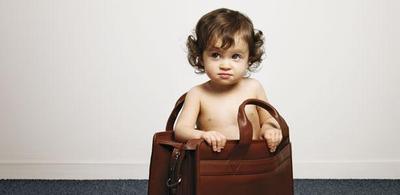 Anne-Marie Slaughter resigned from the third highest position in the State Department in order to be home with her teenage sons. This thought provoking article she wrote for The Atlantic Monthly, entitled "Why Women Still Can't Have It All" should be read by both men and women alike! She's also followed it up with, "Work-Life Balance as a Men's Issue, Too." I'd love to discuss them with you over tea!
Anne-Marie Slaughter resigned from the third highest position in the State Department in order to be home with her teenage sons. This thought provoking article she wrote for The Atlantic Monthly, entitled "Why Women Still Can't Have It All" should be read by both men and women alike! She's also followed it up with, "Work-Life Balance as a Men's Issue, Too." I'd love to discuss them with you over tea!
October 28, 2012
Celebrating Halloween with Toddlers
 Halloween isn't much of a holiday for young children--although it's one of my favorites because I love costumes! I love to see how everyone dresses up as his or her alter-ego or shadow self (either positive or negative!). Last year Agaf and I dressed as the King and Queen of Hearts.
Halloween isn't much of a holiday for young children--although it's one of my favorites because I love costumes! I love to see how everyone dresses up as his or her alter-ego or shadow self (either positive or negative!). Last year Agaf and I dressed as the King and Queen of Hearts.
Cultures all over the world have recognized that the veils between the world of the living and the world of the dead are thinner at this time of year, and I think Mexico and other Latin American countries do a much better job of integrating the celebration of the Day of the Dead into family life: everyone prepares a altar where family members who have died are remembered, and sugar skulls and other "memento mori" remind everyone that life is fleeting. In some locations the entire family picnics at the graveside, bringing flowers and other momentos.
In this country, however, many parents today are looking for
alternatives to both the tricks and the treats of Halloween as it has come down
to us. Some malls invite children to
wear costumes and receive treats Halloween afternoon, while both Waldorf
schools in Boulder offer an alternative "Halloween Journey" in which hundreds
of children and adults are led in small groups by older children or adult
"angels" through a series of fairy-tale and other scenes enacted by the faculty
and parents--quite lovely, and quite a production! Wanting to incorporate more of the element of
"Michaelic courage," one of the schools in California hosted a "Perilous Path"
journey for older children for many years. You may know of other alternative
offerings.
However, toddlers are too young to "get it" about Halloween
costumes--and besides, every day is costume day for them! So parents need to realize that they're
dressing their young child up (if they do at all) for their own enjoyment, and
that the child may resist or probably won't want to keep the costume on more
than fifteen minutes before moving on to something else.
 What we always did at Rainbow Bridge was to explain this to
What we always did at Rainbow Bridge was to explain this to
the parents while still inviting the children to arrive in costume on Halloween
if they wanted to. Our guidelines were
that costumes not include masks and not be scary for little ones (we had ages
1-5). Of course, home-made costumes are great fun, but certainly not required
with today's working parents (and I never wanted our program to be too
"perfect" in any case). While I didn't
say much about "media characters," some of the older boys wore simple costumes
for us and saved their Darth Vader costumes for that night--fair enough. Costumes could be so simple--even a hat was enough.
Everyone seemed to enjoy seeing the costumes
at drop-off, and by the time free play was over, children would be out of their
costumes and we'd go on with our normal day. We did plenty with pumpkins in October
and November--growing and carving them, baking pies, doing fingerplays and songs about them--but all we did for Halloween itself was allow simple costumes, and that seemed like plenty.
October 21, 2012
A Child's Seasonal Treasury
A Child's Seasonal Treasury, by Waldorf early childhood teacher Betty Jones, is a valuable resource for any early childhood teacher or parent with young children.
One homeschooling mother wrote: "Although other books were also helpful, A Child's Seasonal Treasury was really all I needed, as it provided me with everything: seasonally based songs, poems, verses, games, activities, and recipes, in a very easy to follow way, and the layout was simple and beautiful. There were books which contained almost too much information, and they overwhelmed me, whereas Ms. Jones' book gave just enough materials and I was sable to actually makes use of what was offered."
In the forward Betty Peck, Anna Rainville and Nancy Mellon write: ""Contained in this one lovely volume is a very generous supply of original and traditional materials for parents and teachers, providing practical ways to engage children while enhancing family or classroom culture....Whenever you are longing for artistic guidance and inspiration with young children, reach for this compendium of treasures. As early childhood educators we are thrilled and grateful that it is returning to print, and is to be widely available again."
You can learn more and order your copy from www.bettyjones.us.
September 27, 2012
The Tiptoes Lightly Stories
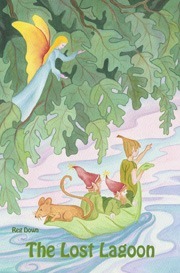 Do you know Tiptoes Lightly and her friends, who come alive through a series of delightful stories to share with your young children? Eurythmist Reg Down has created 8 children's books about their adventures--check them out on his website!
Do you know Tiptoes Lightly and her friends, who come alive through a series of delightful stories to share with your young children? Eurythmist Reg Down has created 8 children's books about their adventures--check them out on his website!
Especially recommended for fall are the stories "The Most Beautiful Dragon in the Whole World" and "St. Martin's Light" from his book The Festival of Stones. These and many other short stories are available as free downloads on his website, but the illustrations are so lovely that you'll want to buy the complete books!
Reg has also recently edited and re-released a favorite for older children, The King of Ireland's Son
by Padraic Colum. He has also republished Gilgamesh (5th grade) and The Children of Odin - The Book of Northern Myths by Padraic Colum (4th grade).
My children loved The King of Ireland's Son when they were growing up, and I'm looking
forward to sharing the Tiptoes Lightly stories with grandchildren!
September 24, 2012
Children and Choices
 A mother wrote:
A mother wrote:
I am just starting to learn more about Waldorf teaching philosophies. I always want to do all in the best interest of the children. Is it wise to let children select the "one they wish" or for me to decide for them. I am confused with this as I have heard different things from various teachers I have talked to around the country (non Waldorf teachers).
Many thanks for your help!
Rahima responds:
While the photo above exaggerates the point, not giving young children so many choices is not only counter-intuitive in our culture ("Poor children! At least there's some area where they can have control!"), but perhaps even somewhat un-American ("What about liberty and freedom?! I don't want to be authoritarian!"), not to mention at odds with some popular parenting approaches today, which want children to choose and then experience the consequences of their choices.
What might we do instead of giving children so many choices, and why? The "ideal" would be to have home life flow so rhythmically and smoothly that your child would know what was happening and what was expected without having to make it conscious, as bringing things to the young child's attention by asking them what they want to do or which they want replaces their dreamy, free-flowing consciousness with the level of awakeness of an older child. It also calls into play the emotions--asking for his or her likes and dislikes rather than letting the child float along in the ambience of "this is how things are; I don't have to worry about them."
If you think about it, choices can be overwhelming instead of empowering. In fact, recent studies with adults have shown that having so many choices takes energy from us each time we have to decide something. This is even more true for a young child, especially if we bring choices first thing in the morning or when they're tired: "Do you want cereal or eggs for breakfast?" "Wah!....I want pancakes!!....." and a meltdown follows.
Pointing out a more esoteric connection, Steiner relates that appealing to children's likes and dislikes all the time through choices not only strengthens that character trait, but also can later result in unclear thinking (ie thinking that arises from likes and dislikes, which can be narrow minded or bigoted).
Here's another angle: It's snowing and your child declares, "No! I'm not going to wear my coat today!" A Waldorf-oriented approach would also pass on the "logical consequences" involved in your saying, "You can either wear your coat today or catch cold." Rather, this is a nonissue because you're the adult and are responsible for your child's health (or nutrition, or being careful with something, or whatever the issue might be). You know that, "We don't go out without our coats on." and, hopefully, that certainty will prevent this discussion in the first place. Besides, young children don't really know when they're cold because they don't penetrate their limbs enough to give an accurate report (this is why feeling a child's hands can give you a good indication whether they're warm enough).
Where it can be helpful to give choices is to say two things that both result in what you want to have happen. It's time to go and your child is resisting, so you say, "Do you want to hop to the car like a bunny, or do you want to fly like an airplane?" Either way, you're on your way. Or you can let a child choose (appropriate) clothing--but try putting it out the night before, not asking her when she's barely awake and things are rushed in the morning.
Food for thought--I hope some of the above illustrations have been helpful!
September 16, 2012
What is Waldorf Education?
Waldorf education is a worldwide system of education for preschool through grade 12 developed from the indications of Rudolf Steiner. Steiner, an Austrian scientist, educator and writer, turned his attention to education after the First World War at the request of Emil Molt, who helped him found a school for the children of the workers at the Waldorf-Astoria cigarette factory in Stuttgart in 1919. The impulse for "Waldorf education," as it came to be called, spread throughout Europe, with the first school in America being founded in New York City in 1928.
 Steiner was a pioneer in the area of developmentally based, age-appropriate learning, and many of his indications were later born out by the work of Gesell, Piaget and others. In addition, he sought to develop a balanced education for the "whole child," one which would engage the child's feeling and willing, as well as thinking, and would leave his or her spiritual nature acknowledged, but free. From preschool through high school, the goal of Waldorf education is the same, but the means differ according to the changing inner development of the child. According to Steiner, "Our highest endeavor must be to develop free human beings, who are able of themselves to impart purpose and direction to their lives."
Steiner was a pioneer in the area of developmentally based, age-appropriate learning, and many of his indications were later born out by the work of Gesell, Piaget and others. In addition, he sought to develop a balanced education for the "whole child," one which would engage the child's feeling and willing, as well as thinking, and would leave his or her spiritual nature acknowledged, but free. From preschool through high school, the goal of Waldorf education is the same, but the means differ according to the changing inner development of the child. According to Steiner, "Our highest endeavor must be to develop free human beings, who are able of themselves to impart purpose and direction to their lives."
Because of this emphasis, the Waldorf Schools were closed by the Nazis during World War II, but soon reopened and have spread in the last two decades to such troubled areas as South Africa, Palestine, Eastern Europe and Russia. In 1994 there were 640 schools, 1087 kindergartens, more than 300 curative (special education) centers and 60 teacher training institutes in 46 countries which are based on Rudolf Steiner's pedagogical impulse. Growth of the movement in America has been very rapid since 1980.
[image error]Early Childhood Education
During the early childhood years, the child is surrounded by a homelike environment which encourages imaginative free play and artistic activity. Steiner recognized that the young child learns primarily through example and imitation, with an emphasis on the importance of movement, rhythm, fairy tales and oral language. Steiner felt that it is not healthy for children to concentrate on cognitive skills such as reading, writing and math until the body has reached a certain level of maturity, freeing the forces of growth for cognitive work. This change is signified by many signs, including the eruption of the adult teeth and the child's ability to reach over its head and touch the opposite ear. Children are carefully evaluated for readiness for first grade, and most schools request that children turn six before school starts.
Many schools have mixed-age kindergartens, with children from 3-6 years old in the same room. Typical daily activities in the preschool/kindergarten include free play, movement games, story circle, and a craft or artistic activity (water color painting, beeswax modeling, coloring with beeswax crayons, baking, and so forth). Puppet plays, nature walks and celebrating the festivals are frequent events throughout the year.
[image error]The Elementary Grades
In the elementary school (grades 1-8), all of the subjects are presented in a lively and pictorial way, because Steiner found the elementary-school child learns best when information is artistically and imaginatively presented. The same teacher stays with the children from first through eighth grade, teaching the "main lesson" subjects, which include language arts, mathematics, history and the sciences. Main lesson is taught during the first two hours of the morning in blocks of three to six weeks per topic. Students create their own "main lesson books" as artistic records of their learning, rather than using textbooks or worksheets. During the rest of the day, special subject teachers fill out the curriculum with two foreign languages, orchestra, singing, arts, crafts, gardening, eurythmy (a movement art developed by Rudolf Steiner) and physical education.
The Waldorf High School
The adolescent's emerging powers of analytical thinking are met and developed in the Waldorf high school, where subjects are taught by specialists in their fields. The role of the teacher is seen as helping the students to develop their own thinking powers. A key to this process is presenting students with an immediate experience of phenomena, such as hands-on experiments or primary sources in literature and history--instead of predigested work from textbooks or anthologies. The rapidly changing psychological nature of the adolescent is addressed through each year's studies being tailored to the central "questions" that live in the hearts of the students of that grade. --Rahima Baldwin Dancy. Written for The Encyclopedia of Childhood.
BIBLIOGRAPHY
Baldwin Dancy, Rahima. (1989, rev. 2012). You Are Your Child's First Teacher. Berkeley, CA: Ten Speed.
Childs, Gilbert. (1991). Steiner Education in Theory and Practice. Edinburgh, UK: Floris Books.
Finser, Torin. (1994). School as a Journey. Hudson, NY: SteinerBooks.
Richards, M.C. (1980). Toward Wholeness: Rudolf Steiner Education in America. New York: University of Columbia Press.
Staley, Betty. Between Form and Freedom. Hudson, NY: SteinerBooks
REFERENCE ORGANIZATIONS
The Association of Waldorf Schools of North America, www.awsna.org
Waldorf Early Childhood Association of North America, www.waldorfearlychildhood.org
BIOGRAPHICAL STATEMENT
Rahima Baldwin Dancy, BA, MS, is a trained Waldorf elementary and early childhood educator. She is internationally known as the author of You Are Your Child's First Teacher on Rudolf Steiner's indications for early childhood.

